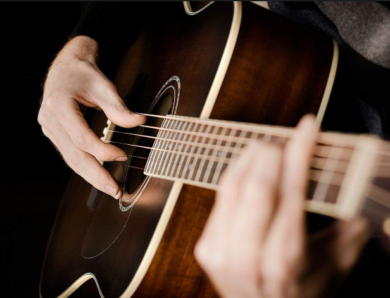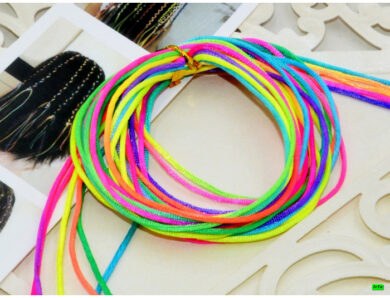Horn key: types and photos, design features, scope
Works, which involve making connections, require the use of special tools, among which wrenches were the most widespread. And today there are a large number of such devices for the consumer, which allow you to effectively tighten the nuts and bolts. And in this range there are special varieties, representing specialized wrenches. Such tools differ from each other, in the first place, its advantages and disadvantages, from the position of which it is worth making a choice in favor of a particular option.
If we talk about specific species, then most often in stores you can find carob, cap, combined and end, as well as adjustable wrenches.
Horn wrenches
In most of us, the wrench is often associated with the carob variety. When using this tool, the nut is fixed between the jaws, made in the form of horns. It is thanks to them that this key got its name. If you turn to GOST, then in it they are defined, as open-end wrenches.
Features of the device
-
The design of this key is as follows, that its longitudinal axis of the head passes with some inclination to the axis of the handle. Most often, the angle to is maintained here 15 degrees. This solution simplifies the work with limited access to the mount.
- Sometimes the angle between the axes of the head and the handle can have another meaning - say, 75 degrees. And often in one key you can see different combinations of angles.
High interest in carob keys provides versatility and ease of operation. Although they have significant shortcomings. Among them, the presence of two small contact zones deserves the most attention, which are not too far from the corners of the nut. When exposed to this area, the corners feel the load, and there is a risk of damage.
If the throat is larger than the nut, then in this case the loads will be exposed to two angles, in the conditions of considerable efforts the risk of their wrinkling considerably increases. Using a horn wrench of the correct size can lead to a similar result, when manipulating which has a stronger impact. The same can happen in that case, if the lips are smaller, than the required thickness.
In the design of the impact key, by means of which tight nuts and bolts are unscrewed, provided thickening at the other end, which is designed to strike him with a hammer or sledgehammer.
Cap wrenches
According to its design, the cap tool is an upgraded version of the carob tool. The difference is that, that it does not have the main disadvantage of horn keys.
This implies the presence 2 small contact spots. When working with such a tool, the head fixes the entire contour of the nut, and when it begins to be exerted by force, the load is distributed evenly on all six faces of the nut or bolt. In other words, two contact spots are replaced by six. In addition, they are somewhat distant from the corners, which in turn minimizes the risk of cornering. Another difference between a cap tool and a carob tool is that, that the head is inferior in size. But this significantly simplifies the work with such a tool.
In the profile of the head of such a tool may be present 12 or 6 facets. The first option provides the greatest convenience at work, because it can perform its task when turning on 30 degrees. As for the hex keys, which use the TORX profile, then they have to return to 60 degrees. For this reason, the latter type of wrenches are not suitable for screwing and unscrewing in confined spaces.. But at the same time they have faces of a larger area, which increases the contact area, and it is removed at a much greater distance from the corners of the nut. Therefore, when working with such a key, there is no reason to worry, what, having made considerable efforts, can damage the mount.
It looks like a carob wrench, that the design also provides two rings, differing in size. Shock models form a special class, which are equipped with a slightly different head, than that, which is used in shock horn modifications.
Sometimes certain circumstances prevent throwing the key from above. In this case, you can use a cut key, which has an open circle. Such a need may arise in those cases, when it comes to dealing with hydraulic and pneumatic installations.
If it is necessary to unscrew nuts and bolts in places, which are difficult to access, then it is permissible to bend the handle. This feature is implemented in the motor wrench, which is made in the shape of a crescent.
Combination wrenches
A further improvement of horn and socket wrenches was the appearance of the tool, one end of which is made in the likeness of the first, and another - the second type of tool. At the moment, it is the combined wrench is most often used in various operations for tightening and unscrewing connections. Naturally, in addition to similar modifications of tools, there are others: let's say, you can find a tool, representing a symbiosis of horn and face. And in most cases at the mention of the combined tools without specifying information the horn-cap is most often meant..
The tool has its differences in terms of implementation, whose head is turned on 90 degrees. The use of such a tool involves creating a palm rest relative to the wide plane of the head.
Adjustable wrenches
The horn tool also served as a basis for creation of an adjustable key, while his sponges are separated from each other by an altered state. In most cases, they are used in everyday life, and in this area they are more popular in contrast to the wrenches of other versions.
Disadvantages
Professionals do not use this tool very often, due to their serious disadvantages:
- the presence of large heads, due to which it is difficult to perform the task in a limited space;
- with backlash, which provides a movable sponge, the nut must not be tight, so, if the effort is small, then this may damage the corners of the nut, and the person himself risks injuring himself;
- gradually the mechanism of the movable sponge loses its performance, due to which the backlash increases even more.
- low strength is the cause of the inability to provide high torque.
- when working you have to constantly adjust the position of the movable sponge.
If we talk about the pros of such a tool, this should include only the ability to choose the appropriate distance between the sponges. However, this dignity becomes almost imperceptible, if instead of this tool to use a face variant with replaceable heads.
Socket wrenches
Execution of this tool is characterized by the presence of recesses, made in the form of a hexagon, which fixes the mount. This type of key is often used in the maintenance of road transport. The traditional version of their implementation involves a L-shape, and each edge has a hexagonal notch.
It is worth noting, that the latter always has the same size, than this tool differs from the cap. Such differences determine the functionality of these ends: thanks to the long part, these wrenches can be used to unscrew the bolts, which are too lost in the design. However, the lever has a shortened length, which provides low torque, in which the bolts are fixed with a short end, and due to the long part it is possible to provide a large torque.
It is a well-known fact, that much more effort is required to unscrew the mount, than when twisting. This is due to the acidification of the threaded connection. Therefore it is possible to twist fastenings by means of a short part, which will act as a lever. You can unscrew it with a long part. This approach does not allow situations to arise, at which long twisted fastening cannot be unscrewed. Such a tool often provides a hole in the bend, designed to capture protruding parts.
A socket wrench connects the socket wrench to the cap tool 12 faces, similar features, which this key demonstrates against the background of the TORX profile. What is meant here, that the normal operation of the key will be ensured only when turning on 30 degrees. There are no special problems when using it, the risk of lubrication of the bolt angles occurs in conditions of less effort or less wear of the bolt head. In some cases, keys of this type can be combined at once 6 i 12-sided heads.
One of the options for such a tool involves attaching the head to the handle with a hinge. This solution causes differences in the size of the heads at each end.
A special kind of such tool are T-shaped wrenches with one head. In addition to them on sale are cylinders, which are made in the form of a cross, as well as modifications with replaceable heads, which significantly limit the size of the set.
Tubular wrenches
The tool of this type is made in the form of a tube, the ends of which have the form of a hexagon. This tool provides a hole for the gate. Its ends can have different sizes. In most cases, keys of this design are used to service equipment and machinery, primarily, cars.
In some cases, manufacturers decide on some design changes, creating a tool in the shape of the letter P by bending the tube. The ends of this tool do not differ in size in terms of location functionality, they are completely identical to the L-shaped socket wrenches.
Ratchet wrenches
Under this type should be understood cap and end tool, which is characterized by the presence in the design of the ratchet mechanism. Of the advantages of these keys should be noted:
- no need to roll over;
- the presence of a very small angle, on which it is necessary to return the tool, to unscrew or tighten the fasteners.
The ratchet also provides the features in the design plan: if available 72 teeth can be limited to turning on 5 degrees. Rattle with 40 teeth requires rotation on 9 degrees, etc.. d. The calculation of the angle is performed by division 360 degrees on the number of rattle teeth. This point is especially important in the situation, when you have to work in a confined space.
Horn keys
Conclusion
Wrenches are in demand not only among professionals, but also for ordinary consumers, which often have to deal with mounting. And although open-end wrenches are the most common option, home craftsman will not mind having in his arsenal of tools of another performance. In many ways it is the type of wrench that determines, how effective it will be to unscrew or tighten the bolt. Miscalculations are not allowed here, as this may damage the nut boundary, because of this, the problem of removing the mount is even more complicated.




